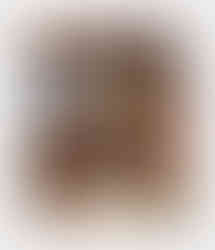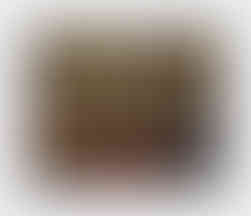IN HERACLITEAN FLUX AND FLOW: ‘PANTA RHEI’ AT ALICE AMATI
- Avantika Pathania
- Sep 10, 2024
- 4 min read
Sophie Birch, Merve Ceylan, Sam Creasey, Rike Droescher, J.A Feng, Harry Grundy, Minami Kobayashi, and Nicholas Marschner delve into the question of how we can come to terms with our existence in a world characterised by perpetual change in Panta Rhei at Alice Amati. writes Avantika Pathania.
Installation images courtesy of Tom Carter/Alice Amati
Panta Rhei is a group exhibition at Alice Amati featuring the works of eight British and international artists. The exhibition aims to illuminate the constant flux of external environment and internal experiences, fostering dialogues between artists choosing to examine the human condition from diverse perspectives. Sophie Birch, Merve Ceylan, Sam Creasey, Rike Droescher, J.A Feng, Harry Grundy, Minami Kobayashi, and Nicholas Marschner delve into the question of how we can come to terms with our existence in a world characterised by perpetual change.
The title of the show references Heraclitus, the first philosopher to theorise that everything is in flux and constantly changing. Heraclitus famously spoke of the ever-flowing nature of existence with his assertion that “everything flows,” encapsulated by the tital term Panta Rhei in Ancient Greek. The shows artists explore transformation and change and what it means to come to terms with this transience: they examine memory, natural changes, and the relationship between humans and nature, capturing transformation itself.
From left to right: Sam Creasy, Three Oasts, 2024,
Sam Creasy, New London Vernacular, 2024
Installation shots courtesy of Tom Carter/Alice Amati
Sam Creasey’s New London Vernacular (2024) focuses on animism and transformation, starting from specific, existing objects but becoming abstracted on the canvas. His work examines the ever-changing urban landscape, drawing from his experience as a logistics driver. His painting technique incorporates plaster and gloss to create a textured, material effect that captures different scenes patched together, with many things happening simultaneously. Harry Grundy is a conceptual artist whose work references his surroundings and the architecture around him. He explores how these structures impact how we move and interact in the world. His work Blood in the Brain (2024) is an interactive structure that also acts as a checkers’ board game, and draws on familiar architectural spaces like playgrounds, creating a sense of familiarity and unreality. One might also think of it as a metaphor for someone moving and navigating through life. Nicholas Marschner’s painting Untitled (2024) evokes different feelings through colour and pattern, creating atmospheres of longing and melancholia. From a compositional standpoint, it bears resemblance to Manet’s Le Déjeuner sur l’herbe (The Bath, 1862-63), while exhibiting a colour palette reminiscent of Munch’s The Scream (1893).
From left to right: Nicholas Marschner, Untitled, 2024
Harry Grundy, Blood in the Brain, 2024
Installation shots courtesy of Tom Carter/Alice Amati
The exhibition extends to the basement which has an entirely different aura as compared to the one upstairs. Rike Droescher’s work Carry On, 2024, references historical origins and mythologies, reflecting a time when humans lived in symbiosis with nature. Her pieces, like baskets and collected natural objects, evoke the necessities of prehistoric humans, emphasizing our intrinsic connection with nature. Meanwhile, Minami Kobayashi reflects on memories of her time in Japan. Her artwork Man with tattoo and cat, 2024, features vegetation from her garden and recurring animals like cats, creating dreamy, nostalgic scenes reminiscent of childhood memories.
From left to right: Rike Droescher, Carry One, 2024,
Minami Kobayashi, Man with tattoo and cat, 2024
Installation shot courtesy of Tom Carter/Alice Amati
Curated by Amati herself, the exhibition’s layout, with its organic arrangement of works, reflects a natural evolution of thought. “When I was looking at what makes sense with each other, this narrative revealed itself naturally," says Amati. "It happened very organically when I started putting things together, the sort of red thread between all the words or the patterns between how the artists are making works that have happened, where it happened. You don’t need to think much about it.” The upper floor’s architectural focus contrasts beautifully with the basement’s nature-centric themes, yet both spaces share a cohesive narrative. The variety of textures, from the rough and tactile to the soft and fluid, encourages viewers to engage with each piece on a deeper level.

The trajectory of transience and human experiences deeply resonates with Amati. She elaborates, “I was also reading an essay by Freud which he wrote during the war. It was fascinating to see how Freud discussed the transience of the world, suggesting that everything beautiful, whether natural or man-made, eventually gets destroyed, and then we perish. This idea also reflects both the time we are living in now and the timeless nature of human experience, as everything inevitably changes and perishes.”
The exhibition aspires to capture and communicate the ever-changing tapestry of human experience. Each artist brings a unique viewpoint, contributing to a harmonious conversation about the nature of change. Beyond being a stunning visual showcase, this exhibition serves as a poignant reminder of the transient and breathtaking beauty of the world and our interconnectedness with it. Curated with an acute awareness of both historical and modern contexts, the exhibition bridges the gap between the ephemeral and the eternal, inviting viewers to reflect on the delicate balance of life.
Panta Rhei runs from 12 July to 10 August 2024, at Alice Amati, Warren Street.
Avantika Pathania is a London-based writer and arts journalist.














